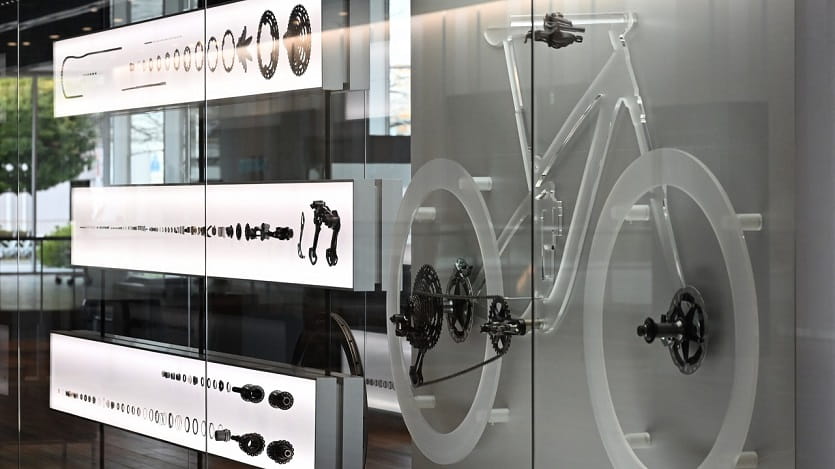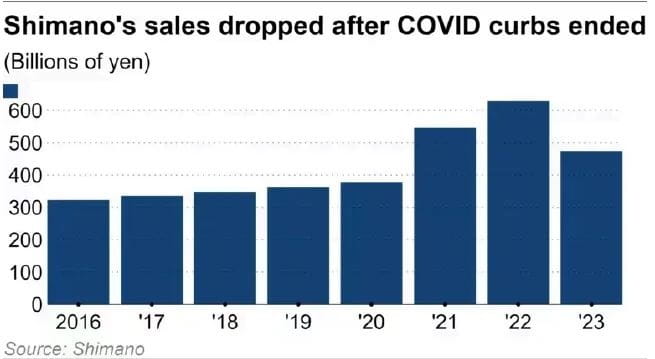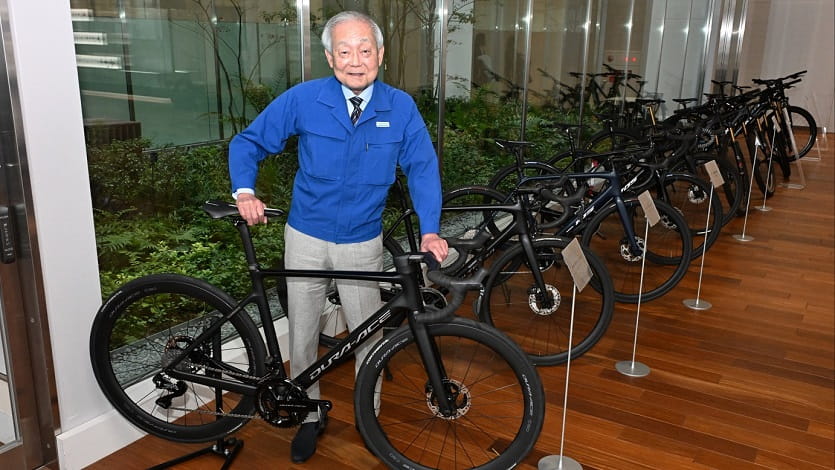

Chairman Yozo Shimano said in an interview on Feb. 16 that demand for sports bikes is increasing in Southeast Asia as the economy develops. (Photo by Arisa Moriyama)
SAKAI, Japan -- Shimano, the world's largest bicycle parts maker, will use its new plant in Singapore as a hub for exploring Southeast Asia's high-potential market for sports bikes, Chairman and CEO Yozo Shimano said.
"Our Singapore plant is controlling our major overseas factories," he told Nikkei Asia in an exclusive interview. He continued that as demand for bicycles increases in Asia and Latin America, its Singapore plant, which mainly makes midrange components, will become even more important.
The plant went online in 2023, replacing an old one established in 1973. Investing 25 billion yen ($165 million), Shimano renewed the facilities to increase efficiency.
The company was founded in 1921 by ironworker Shozaburo Shimano in the industrial city of Sakai, just south of Osaka.
It develops and manufactures a wide range of parts, such as gears, transmissions, brakes and wheels, mainly for sports bikes like road bikes and mountain bikes, with an estimated global share of 85%.

Shimano bicycle components are exhibited in the Manufacturing Technology Center at its headquarters in Sakai. (Photo by Arisa Moriyama)
Shimano has major factories in Japan, Singapore, Indonesia, Malaysia, the Philippines, China and the Czech Republic. In coordination with the factories in neighboring counties, the Singapore plant focuses on midrange products, which account for 70% of the company's production volume.
The chairman, who served as the company's fifth president until 2021, said the Singapore plant has been playing a key decision-making role in the company's global operations. It identifies what overseas facilities need investment, then passes on suggestions to the head office in Japan, he said. The company will continue to invest about 40 billion yen annually in facilities and equipment for medium- to long-term growth, 60% of which will be spent overseas, including in Singapore.
Currently, Europe and North America are the largest markets for sports bikes, but he is betting on growth in Southeast Asia, where most people once viewed sports bikes as luxuries.
"In countries like Vietnam, bicycles are first and foremost a means of transportation, but as the economy develops, demand for sports bikes will also increase," he said. He expects that roughly 20% of the company's products will serve end users in Southeast Asia in the medium to long term.

The company is accelerating its efforts to promote sports bikes in Southeast Asia by holding bicycle competitions in cooperation with bicycle makers and local agencies. It has been operating a museum, Shimano Cycling World, in Singapore since 2014 to foster cycling culture.
But Shimano's road ahead seems more bumpy than smooth, and taking it requires being well-equipped.
During the COVID-19 pandemic, Shimano's performance was buoyed by a surge in demand for outdoor gear. Net sales and income reached record highs of 628.9 billion yen and 128.1 billion yen in 2022, a great leap from the 363.2 billion yen and 51.8 billion yen in 2019.
"We had anticipated that there would eventually be a slump," said the chairman. In 2023, net sales and income fell to 474.3 billion yen and 61.1 billion yen as demand declined after the pandemic. The company is now seeking ways to revive its performance.

Shimano with a road bike equipped with the company's flagship component set, Dura-Ace. (Photo by Arisa Moriyama)
"At the time when demand was surging, we had to prioritize increasing production and postpone other projects for medium- and long-term growth that we had begun," he said. Now the company has resumed one of those projects: increasing in-house manufacturing to shorten delivery times.
According to Shimano, the company currently outsources about 50% of its parts for the company's flagship parts series, Dura-Ace, to subcontractors. "We make products by combining other companies' excellent technologies and expertise. We cannot make all of them by ourselves," he said. "[But] the supply chain for bicycles is long, and manufacturing takes time. ... We will be able to shorten the lead time by bringing what we can do in-house to some extent."
The company plans to increase its in-house production ratio to approximately 70% for Dura-Ace in the next few years and improve production efficiency by utilizing digital and other technologies, with an annual investment of 15 billion yen. "We should be able to improve profit margins," he added.
The competition in the market has increased as e-bikes -- sports bikes powered by lightweight batteries -- become popular and new manufacturers enter the market. "We will be able to take advantage of our many years of experience as a bicycle parts manufacturer and our knowledge of bicycles."
A version of this article was first published by Nikkei Asia on March 6, 2024. ©️2024 Nikkei Inc. All rights reserved.
 A Singapore Government Agency Website
A Singapore Government Agency Website


